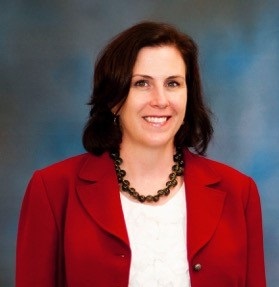Christine Marks is Vice President of Marketing for L&R USA. Lohmann & Rauscher (L&R) is a global manufacturing and supplier of high quality wound care, compression and hygiene products.
Following is a conversation with Christine about the potential that she envisions for more exacting clinical research for wound care, improved patient outcomes, and more efficient and effective process and treatment from caregivers.
Interviewer: Can you tell us about some of the challenges you faced in setting up your clinical wound care study for your new product?
Christine: In 2015, we were introducing an L&R product into the United States. The product was not well-known here, and we wanted to support our market entry with additional formalized clinical research. I met Gary Ross, CEO of Med-Compliance IQ, at an industry event; the company’s WoundWiseIQ technology was very interesting. A couple of months later, we had engaged an independent investigative firm to run our clinical study and had reached the point of clinical study on the progress of wounds. The clinical investigator contacted Gary to talk about how the WoundWiseIQ technology could provide a more transparent and efficient way to provide clinical data to the study.
Interviewer: How would you describe how the caregivers in clinical studies have reported wound healing progress in the past?
Christine: They have followed standard protocol to report whether a wound was getting larger or smaller over time. Each site of study would likely have been provided with cameras and paper rulers. Clinicians would have done their best to measure and photograph wound sites, using a cotton swab or a gloved finger to measure the depth of the wound. In our study, for example, each participating site—and there were multiple locations—would have had to record their results, collect the paperwork, and fax it in at night. The quality of the wound documentation would have varied, depending on the lighting in the treatment room and on the care and skill of the staff member photographing and measuring. Instead, our study deployed WoundWiseIQ – and the results were excellent.
Interviewer: Tell us about that experience.
Christine: In our study, instead of the old way, nurses replaced that paper ruler, camera, and cotton swab with an iPhone application that uses the phone’s camera to collect, send and analyze data via the WoundWiseIQ Cloud. It’s amazing how simple and effective WoundWiseIQ is to use. A nurse can snap and send color photos which show the wound, its measurements, and report the margins of the wound. With WoundWiseIQ, you also get planimetric area (the true surface area), which in wound care, refers to the digital tracing of the perimeter of a wound to calculate wound area. Rather than estimating how the area has changed from exam to exam by attempting to measure the irregular perimeter, the planimetric measure provided through the WoundWiseIQ app is more accurate.
The clinicians and investigators in our study had not used anything like WoundWiseIQ. The application makes it easy and low cost to capture data and to perform automatic report trending. The system is fully HIPAA-compliant. WoundWiseIQ also made the investigative steps more efficient; investigators could see patient enrollment instantaneously from a central location. The sites in our study were able to collect photos and measurements and transmit and store the information readily in the cloud. The data they reported was consistent and timely.
Interviewer: Was there much of a learning curve?
Christine: Not at all. Our initial training and kickoff was in February 2019 when we had training for the clinical sites—the rules and regulations and ethical do’s and don’ts. The WoundWiseIQ team flew in for training to teach participants how to use the software. I found their willingness to automate even more of our paperwork into their application unbelievably collaborative. Any company or investigator performing a study of wounds would benefit from this software. More importantly, WoundWiseIQ is a great tool for improving would care and patient outcomes.

Christine Marks is Vice President of Marketing for Lohmann & Rauscher (L&R) USA. She is responsible for developing and executing the US marketing strategy for L&R’s wound care and compression product portfolios. Key responsibilities include leading the upstream and downstream marketing initiatives with a focus on strategic planning, portfolio expansion and management, voice of customer research, brand awareness campaigns, program creation and sales execution presentation and tools.
To learn more about the latest developments in wound imaging and view a demonstration of this powerful tool to improve patient care, visit www.WoundWiseIQ.com.

